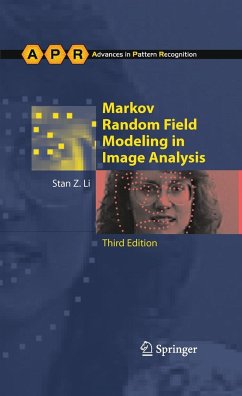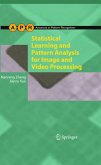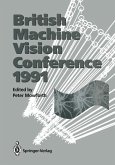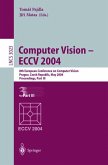Markov random field (MRF) theory provides a basis for modeling contextual constraints in visual processing and interpretation. It enables us to develop optimal vision algorithms systematically when used with optimization principles. This book presents a comprehensive study on the use of MRFs for solving computer vision problems. Various vision models are presented in a unified framework, including image restoration and reconstruction, edge and region segmentation, texture, stereo and motion, object matching and recognition, and pose estimation. This third edition includes the most recent advances and has new and expanded sections on topics such as: Bayesian Network; Discriminative Random Fields; Strong Random Fields; Spatial-Temporal Models; Learning MRF for Classification. This book is an excellent reference for researchers working in computer vision, image processing, statistical pattern recognition and applications of MRFs. It is also suitable as a text for advanced courses in these areas.
From the reviews of the third edition:
"Prof. Li's book ... provides a comprehensive introduction to the area of MRF in general and to its applications in image processing in specific. ... is very well written with a plethora of references for the reader that wants to delve further into specific areas. ... In conclusion, this book is very thorough, both in a mathematic and a descriptive manner. Anyone interested in image processing and its applications ... can benefit from the variety of provided examples and its wide range of references." (Apostolos Georgakis, IAPR Newsletter, Vol. 31 (4), October, 2009)
"This book elegantly and effectively elaborates on MRF theory and related topics. Each chapter includes the problem definition, related mathematical formulation and method explanations, and very useful examples. ... This is an excellent book on MRF theory for image analysis. Researchers and graduate students will find this book very useful for understanding the theory clearly." (Fatih Kurugollu, ACM Computing Reviews, November, 2009)
"Prof. Li's book ... provides a comprehensive introduction to the area of MRF in general and to its applications in image processing in specific. ... is very well written with a plethora of references for the reader that wants to delve further into specific areas. ... In conclusion, this book is very thorough, both in a mathematic and a descriptive manner. Anyone interested in image processing and its applications ... can benefit from the variety of provided examples and its wide range of references." (Apostolos Georgakis, IAPR Newsletter, Vol. 31 (4), October, 2009)
"This book elegantly and effectively elaborates on MRF theory and related topics. Each chapter includes the problem definition, related mathematical formulation and method explanations, and very useful examples. ... This is an excellent book on MRF theory for image analysis. Researchers and graduate students will find this book very useful for understanding the theory clearly." (Fatih Kurugollu, ACM Computing Reviews, November, 2009)








